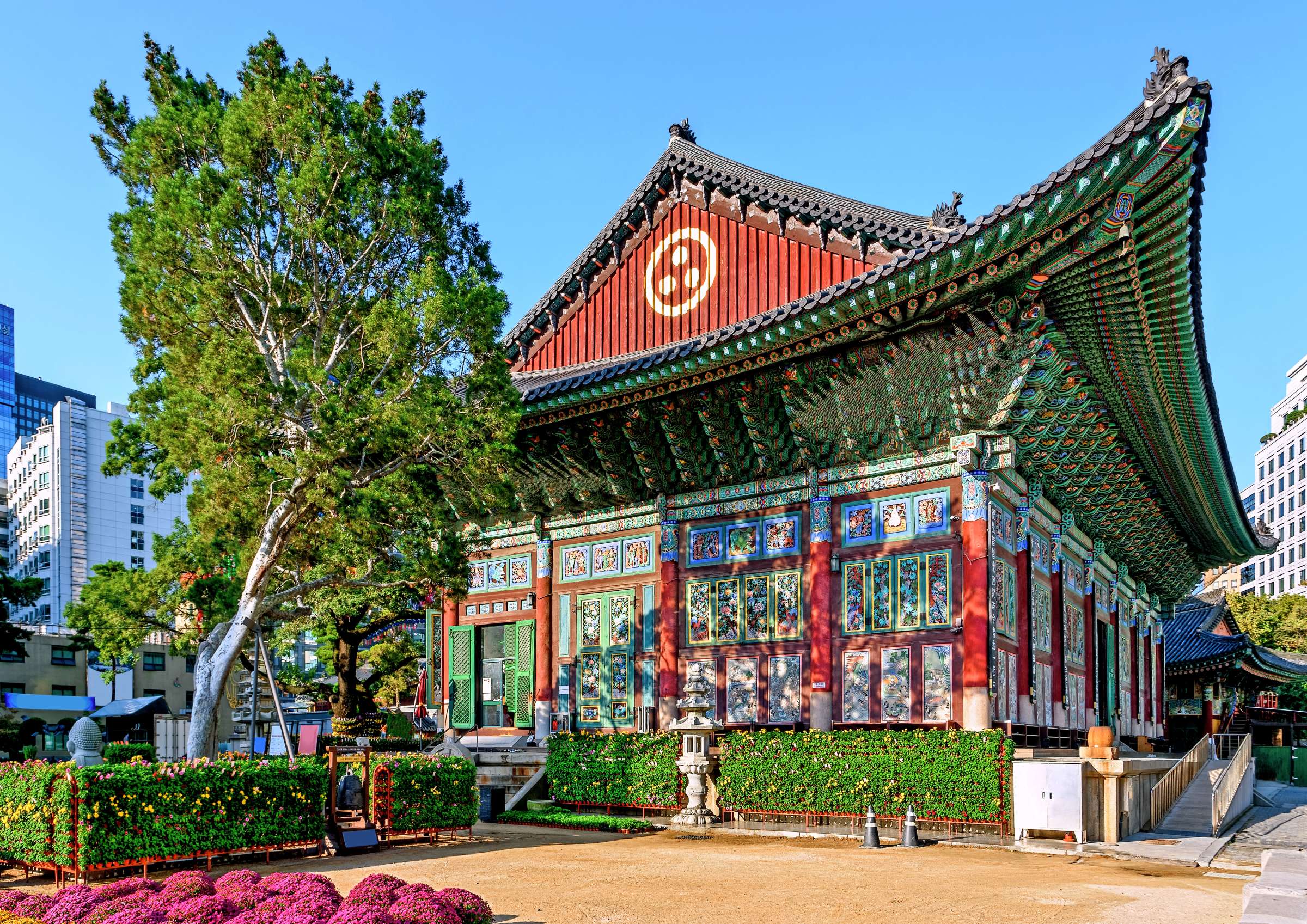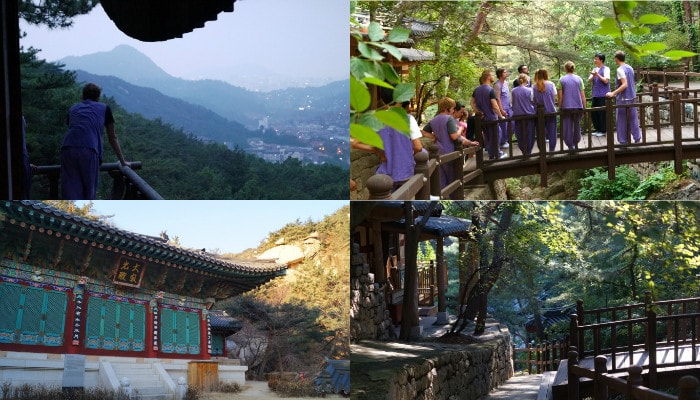Discover Seoul’s Seven Most Unforgettable Buddhist Temples
Seoul is a city of contrasts, where modern skyscrapers and ancient palaces coexist. But among the hustle and bustle, there are also serene oases of peace and tranquility: the Buddhist temples.
Buddhism has a long history in Korea, dating back to the 4th century. Today, there are more than 900 Buddhist temples in Seoul, each with its unique architecture, art, and culture. Whether you are looking for a spiritual retreat, a cultural immersion, or a scenic escape, you will find a temple that suits your needs.
Here are seven of the most unforgettable Buddhist temples in Seoul, where you can experience the rich heritage and diversity of Korean Buddhism.
Bongeunsa

Bongeunsa is one of the largest and most popular temples in Seoul, located in the heart of the Gangnam district. It was founded in 794 by the monk Yeon-hoe, and has been rebuilt and renovated several times over the centuries.
The temple is famous for its 23m-tall statue of Maitreya, the future Buddha, which stands on a lotus pedestal and overlooks the city. The temple also boasts a collection of more than 3,000 Buddhist scriptures, some of which are designated as national treasures.
Bongeunsa offers various programs for visitors, such as temple stays, meditation classes, tea ceremonies, and lantern making. You can also enjoy the temple’s beautiful gardens, which feature a pond, a pagoda, and a stone bridge.
Jogyesa

Jogyesa is the headquarters of the Jogye Order, the largest sect of Korean Buddhism. It is located in the center of Seoul, near the Gyeongbokgung Palace and the Insadong cultural street. It was established in 1395, and has been the focal point of Korean Buddhism ever since.
The temple is known for its splendid decorations, especially during the Lotus Lantern Festival, which celebrates the birthday of the Buddha. The temple is adorned with thousands of colorful lanterns, creating a festive and vibrant atmosphere. The temple also hosts various cultural events, such as concerts, exhibitions, and performances.
Jogyesa is a great place to learn about the history and teachings of Korean Buddhism, as it has a museum, a library, and a souvenir shop. You can also join the daily chanting and meditation sessions, or simply relax in the temple’s courtyard, which is filled with lotus flowers and trees.
Gilsangsa

Gilsangsa is a relatively new temple, built in 1997 on the site of a former restaurant. It is located in the Seongbuk district, near the Bukhansan National Park. It was founded by the monk Beopjeong, who was known for his simple and humble lifestyle.
The temple is a hidden gem, tucked away in a quiet and wooded area. It has a cozy and intimate atmosphere, with wooden buildings and stone paths. The temple is also home to a variety of artworks, such as paintings, sculptures, and calligraphy.
Gilsangsa offers a chance to experience the daily life of the monks, as you can join them for meals, chores, and prayers. You can also participate in the temple’s cultural programs, such as lectures, concerts, and workshops.
Bongwonsa
Bongwonsa is the oldest temple in Seoul, founded in 889 by the monk Doseon. It is located in the Yeonhui district, near the Yonsei University. It is the head temple of the Taego Order, the second largest sect of Korean Buddhism.
The temple is renowned for its Yeongsanjae ceremony, which is a ritual of offering food and prayers to the spirits of the deceased. The ceremony is held every year on the sixth day of the sixth lunar month, and attracts thousands of visitors. The ceremony is accompanied by the Dharma Drumming, which is a performance of traditional percussion instruments.
Bongwonsa is also a place of natural beauty, as it is surrounded by lush greenery and flowers. The temple has a scenic view of the Seoul skyline, and a pleasant breeze that cools the air.
Geumsunsa

Geumsunsa is a temple that offers a stunning view of the Han River and the Namsan Mountain. It is located in the Mapo district, near the World Cup Stadium. It was founded in 810 by the monk Jingam, and has been a place of meditation and prayer for many generations.
The temple is notable for its three-story stone pagoda, which is one of the oldest and largest in Korea. The temple also has a hall dedicated to Ksitigarbha, the bodhisattva of the underworld, who is believed to help the souls of the dead.
Geumsunsa is a temple that welcomes everyone, regardless of their faith or background. The temple offers various programs for foreigners, such as temple stays, meditation retreats, and cultural tours. You can also enjoy the temple’s facilities, such as a cafeteria, a library, and a souvenir shop.
Hwagyesa
Hwagyesa is a temple that is located at the foot of the Samgaksan Mountain, in the northern part of Seoul. It was founded in 1522 by the monk Shinwol, and has been a center of Zen Buddhism in Korea.
The temple is a place of harmony and peace, where you can immerse yourself in the nature and culture of Korean Buddhism. The temple has a beautiful landscape, with a stream, a waterfall, and a pine forest. The temple also has a museum, a gallery, and a tea house.
Hwagyesa is a temple that is open to anyone who wants to learn and practice Zen Buddhism. The temple offers various programs, such as temple stays, meditation courses, and Zen talks. You can also join the monks for their daily activities, such as chanting, bowing, and walking.
Gwaneumsa

Gwaneumsa is a temple that is dedicated to Avalokitesvara, the bodhisattva of compassion. It is located in the Dongdaemun district, near the Cheonggyecheon Stream. It was founded in 1631 by the monk Hyujeong, who was also a famous general and scholar.
The temple is a place of healing and hope, where you can feel the presence and grace of Avalokitesvara. The temple has a statue of Avalokitesvara with a thousand arms and eyes, which symbolizes his ability to see and help all beings. The temple also has a hall of 500 arhats, who are the enlightened disciples of the Buddha.
Gwaneumsa is a temple that is accessible and convenient, as it is close to the subway station and the shopping district. The temple offers various services and events, such as counseling, prayer, and lantern-making. You can also visit the temple’s market, where you can buy fresh and organic food.


